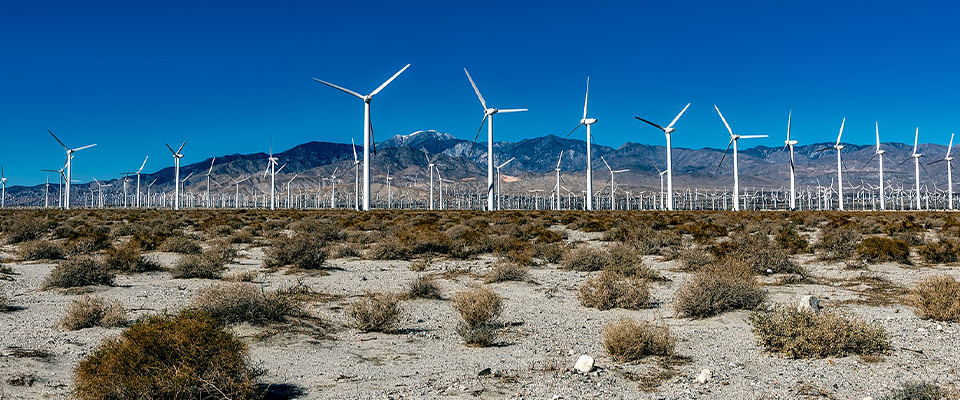Last year, a heat wave caused hundreds of thousands of people to be without power in California. The rolling blackouts were the first to affect the state in almost 20 years, and are unlikely to be the last.
Severin Borenstein knows about energy matters. The E.T. Grether Professor of Business Administration and Public Policy at the Haas School of Business and faculty director of the Energy Institute at Haas, Borenstein is an expert on energy policy, climate change, and electricity deregulation. He currently serves on the Governing Board of the California Independent System Operator (CAISO), the body that oversees the state’s electricity market and power grid. Borenstein, who has an economics degree from Cal, is frequently quoted in the press on topics related to California’s energy outlook.
“We’re paying for many of the state’s energy and climate policies through electricity rates, costs that we still incur even if some households avoid them by putting solar on their roof.”
With another hot summer already underway, we spoke with him about the likelihood of more blackouts this season, the potential challenges and solutions presented by renewable energy, and what Californians themselves can do to combat, or at least cope with, our chronic energy woes.
Last year, California struggled with rolling blackouts caused by heat waves. How likely is it that this problem arises again?
It’s almost certain that we will be close to the edge on some days this summer. In fact we already have been, particularly on July 9. The summer is already shaping up to be much hotter than average, and the drought is reducing hydroelectric generation, one of the sources we depend on, particularly because it is so flexible and can ramp up quickly when solar [power] ramps down as the sun sets. Plus, the drought and heat are making wildfires worse, which is a threat to the long-distance transmission lines that we rely on to bring in power from neighboring states.
You’ve talked about problems with renewable energy—particularly about how solar power is highly inequitable, with the affluent reaping cost savings from solar panels while costs are shifted onto the poor. How can we remedy this?
Unfortunately, residential rooftop solar is attractive to some customers simply because our electricity rates are so high, for reasons that have little to do with the cost of providing electricity. We are paying for many of the state’s energy and climate policies through electricity rates, costs that we still incur even if some households avoid them by putting solar on their rooftop. And, overwhelmingly, it is wealthy people who do that. The solution is to put all renewable sources on a level playing field and let the lowest-cost, highest-value ones provide most of the supply. Right now, that means more large-scale wind and solar, along with batteries.
How do we cope with other problems with renewable energy, as when the lack of a given resource (water, wind, sun) causes less energy to be generated? In California, that appears to be a problem with hydroelectric power in particular.
Yes, with the climate changing, it is hard to know how the availability of these resources will change over time. Drought will make hydro less available. We saw last year what wildfires can do to solar production. And wind patterns can change as the climate changes. That should make us cautious about assuming that we know what the best solutions are. In addition, lots of technologies are still evolving and can potentially help out in the future. We need to remain nimble and adaptive, while staying focused on massive transition from fossil fuels and CO2 emissions.
Given that uncertainty, what is the future of energy in our state?
“If we can get households and businesses to adjust their air conditioning settings by a few degrees—say setting your thermostat to 77° instead of 74°—that would have a huge impact.”
I am an economist, not a technology expert, but even the technology experts aren’t great at predicting how technology will evolve. There have been some great successes in wind, solar, and batteries in the last decade, but also some real disappointments, such as with biofuels, wave and tidal power, and progress in new geothermal technologies. I wouldn’t rule any of these out, just saying that it shows how difficult it is to predict which technologies will win out. That’s why we need a broad portfolio, and we need to aggressively invest in research and development. One related point: A decade ago, fracking was just starting to drive down the cost of natural gas and hadn’t yet really affected oil production, but that has been another technological “success” in the last decade. The point is that fossil fuel technologies also evolve and improve, so the goalposts are constantly moving.
So, what can Californians do to reduce the inevitable stress on the system?
Thank you for asking this, because this has a fairly straightforward answer. On a typical summer afternoon, the demand in the CAISO area is 30 gigawatts (GW), but on a really hot summer afternoon it is around 45 GW. The 50 percent difference is almost entirely air conditioning. If we can get households and businesses to just adjust their air conditioning settings by a few degrees—say setting your thermostat to 77° instead of 74°—that would have a huge impact on the stress in the system. Of course, people need to stay comfortable, and that’s why I have been pushing for a “Hawaiian shirt summer.” Actually it can be any sort of light, short sleeve clothing. Japan did this in 2011 after the Fukushima disaster and closing of most of their nuclear power plants. It is a very formal society, but they threw off their coats and ties for a summer, raised the thermostats to over 80°, and got through the summer without blackouts. I think in casual California, we should be able to do at least as well.



















